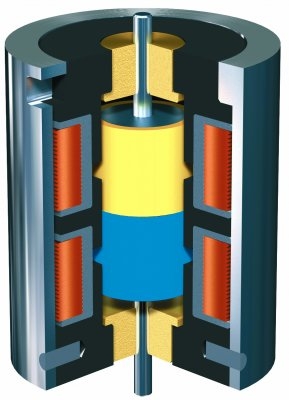Hi dear enthusiasts ,
,
I am planning to run a push/pull 21 lb force electric solenoid. It takes an input of 12 V and demands around 35 Amps (instantaneous I believe) to move between pushed and pull positions. I am planning to run it using a H-bridge with PWM capability. I am hoping to use the PWM capability that comes along with H-bridge to control how far of push/pull I get out of the solenoid. I have a control unit to produce the PWM signal and an AG801 8-Cell (light weight lithium-iron battery) to provide the current for driving the solenoid.
Here is the link of the H-bridge I am using. (click on the word "link").
I have two concerns however:
The battery manufacturer only provides stats which are relevant and in comparison to a lead-acid battery. So, overall I am not sure whether the battery will support solenoid’s instantaneous draw. Also for the sake of argument imagine the battery has other loads on it similar to a car.
Secondly, to overcome the instantaneous current draw (if it turns out to become troublesome) I am thinking whether it is possible to use PWM to power the solenoid itself. So, not only use a PDM signal to control solenoids position, but also power it. Is this a possible option and does it make any difference in my case?
Any ideas, hints or resources are much appreciated.
Many thanks in advance!!!

I am planning to run a push/pull 21 lb force electric solenoid. It takes an input of 12 V and demands around 35 Amps (instantaneous I believe) to move between pushed and pull positions. I am planning to run it using a H-bridge with PWM capability. I am hoping to use the PWM capability that comes along with H-bridge to control how far of push/pull I get out of the solenoid. I have a control unit to produce the PWM signal and an AG801 8-Cell (light weight lithium-iron battery) to provide the current for driving the solenoid.
Here is the link of the H-bridge I am using. (click on the word "link").
I have two concerns however:
The battery manufacturer only provides stats which are relevant and in comparison to a lead-acid battery. So, overall I am not sure whether the battery will support solenoid’s instantaneous draw. Also for the sake of argument imagine the battery has other loads on it similar to a car.
Secondly, to overcome the instantaneous current draw (if it turns out to become troublesome) I am thinking whether it is possible to use PWM to power the solenoid itself. So, not only use a PDM signal to control solenoids position, but also power it. Is this a possible option and does it make any difference in my case?
Any ideas, hints or resources are much appreciated.
Many thanks in advance!!!


